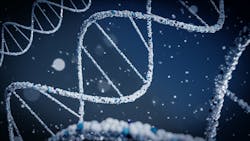Researchers have developed high-throughput microscopy and machine learning systems that can identify and classify DNA repair factors, according to a news release from Massachusetts General Hospital.
The DNA that lies tightly coiled in nearly every human cell is subjected to thousands of insults and injuries from within and without daily, which is why the human body has evolved multiple highly effective mechanisms for repairing DNA damage. Faulty DNA damage repair can lead to many types of cancer, neurodegenerative diseases, and other serious disorders.
“We have in place exquisite mechanisms to repair DNA breaks, and when those fail, we end up with disease. We accumulate genomic instability, we accumulate mutations, and many diseases happen because of the inability of cells to repair DNA,” says Raul Mostoslavsky, MD, PhD, Scientific Co-director of the MGH Cancer Center and the Laurel Schwartz Professor of Oncology (Medicine) at Harvard Medical School.
DNA damage repair is a double-edged sword: When it goes awry, it can lead to diseases such as cancer and degenerative motor disorders, but it can also be exploited to treat many forms of cancer using drugs that interfere with DNA’s ability to fix itself, thereby causing cancerous cells to stop replicating and die.
“We decided to develop a high-throughput assay to try to identify repair factors in a more unbiased way. We ended up developing a unique microscope-based automatic system to generate DNA damage and to collect information on proteins that are recruited to these types of damage,” he says.
They describe their technique — a combination of high-throughput microscopy and machine learning — in the journal Cell Reports.

